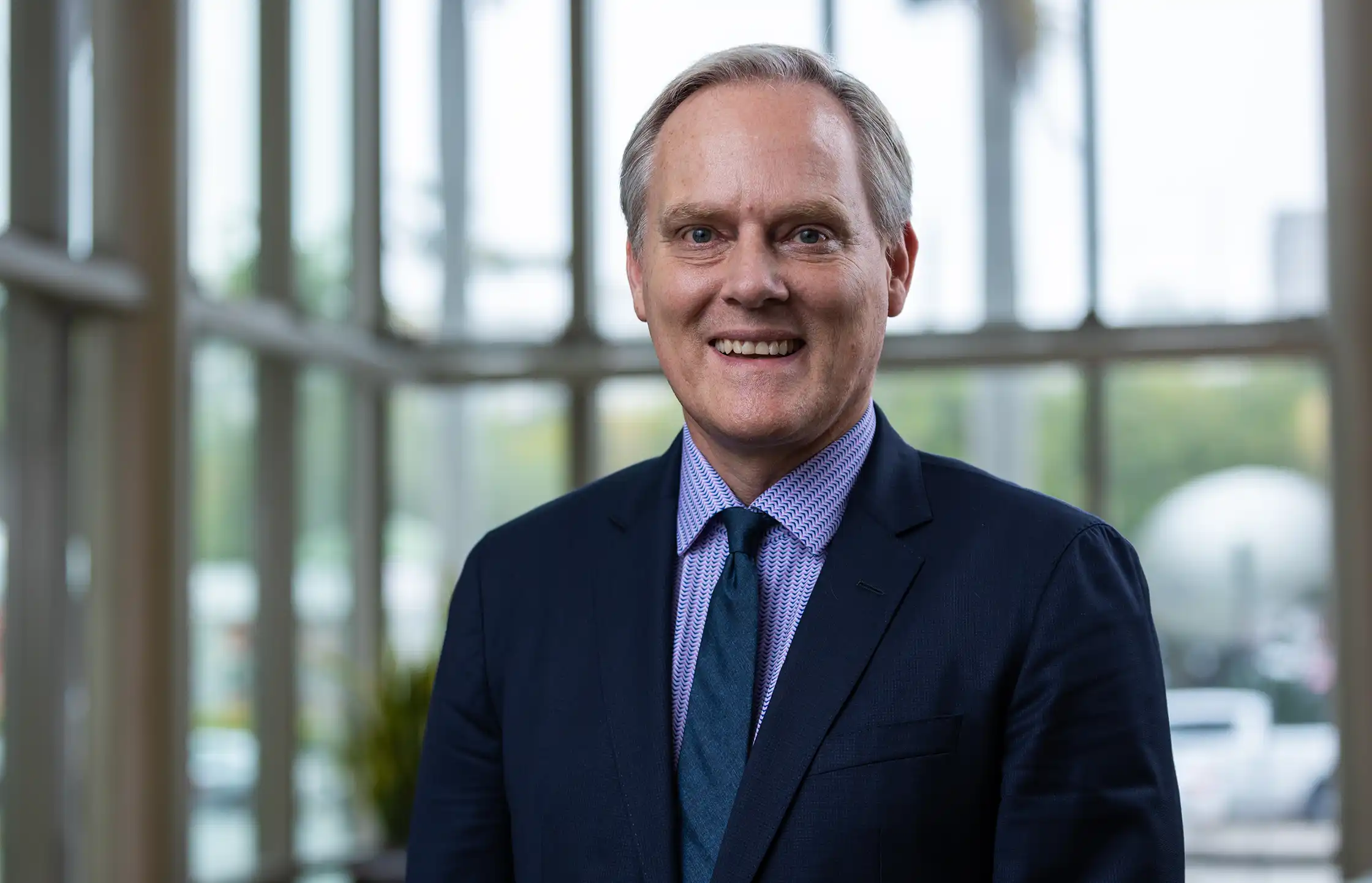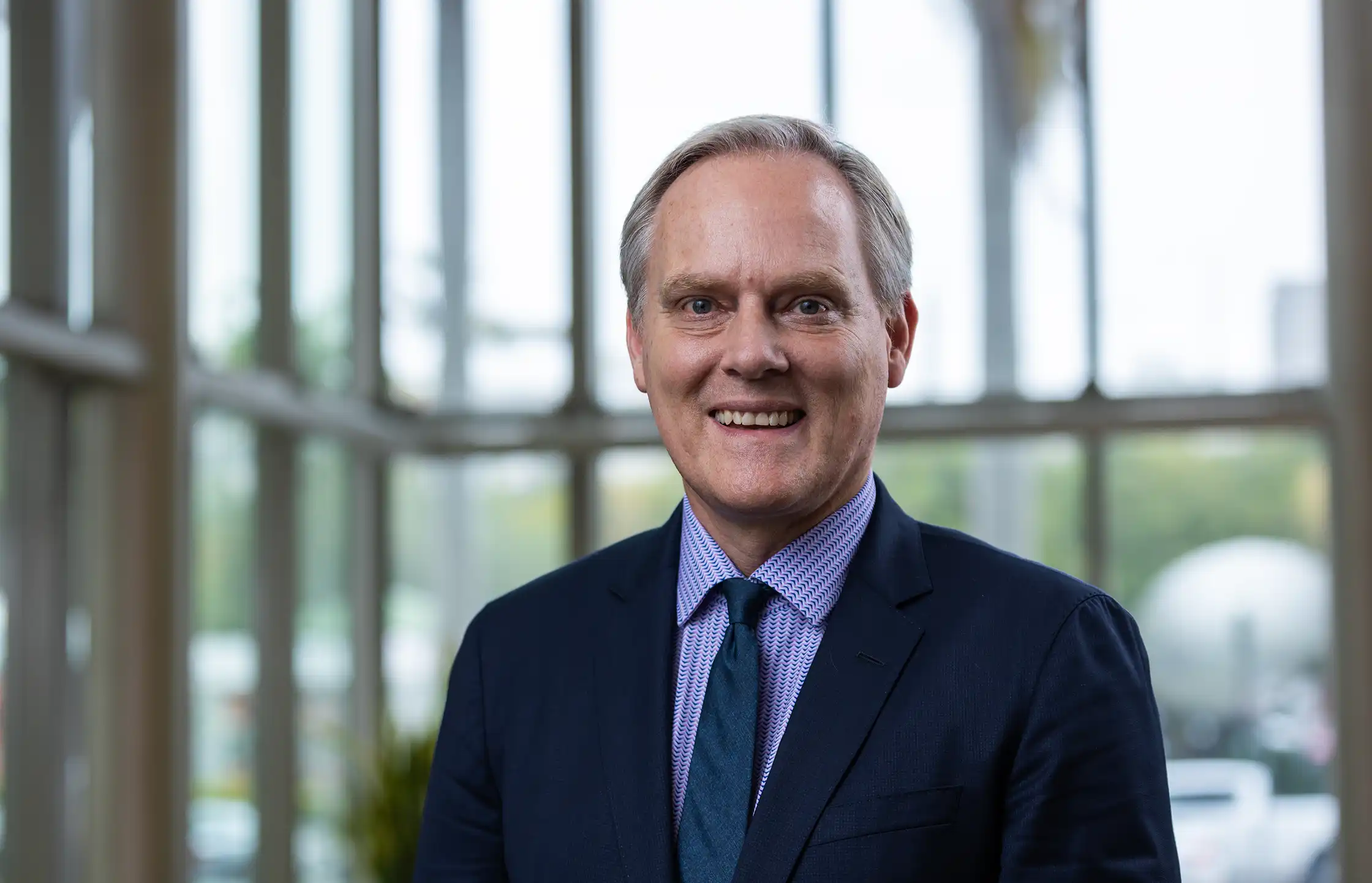“Work Hard, Play Hard”
To find a cure to multiple myeloma, Dr. C. Ola Landgren is building a team that functions like a family
By Charlotte Schubert, Ph.D.
Photography by CLUTCH Content Partners

Dr. Landgren says most multiple myeloma patients may now have a normal lifespan.
C
Ola Landgren, M.D., Ph.D., is director of Sylvester Comprehensive Cancer Center’s Myeloma Research Institute, which he launched in 2020. Dr. Landgren has an impressive track record in researching and treating multiple myeloma, the second-most-common blood cancer in the U.S., currently affecting nearly 200,000 people. We spoke with him about the state of the disease and his efforts to battle it.
What changes have you seen in multiple myeloma treatments over the years?
Many successful drugs have been approved by the Food and Drug Administration, and the agency recently said myeloma remains at the forefront of new approvals. Multiple myeloma has shifted from being a dismal disease for most patients to one where they may now have a normal lifespan.
What progress has the institute made so far?
We’ve built a large research lab, begun conducting clinical trials, expanded outpatient care, launched a new inpatient program and established fellowships. We’ve grown from three employees to 70, and we now have about 7,000 outpatient visits annually, up from around 1,000. We are publishing in high-impact journals and give talks at key meetings and conferences worldwide.
How do the members of your team work together?
I have a family-centered approach to program building. Every day, my main focus areas are to help patients and help our faculty. I meet with faculty and leaders within our myeloma program every one to four weeks, depending on their needs. Every three months, we have team-building activities that include the entire program. We work hard, and we play hard. By building a strong core of clinical, research and professional support people, we function as a very strong family. We are dedicated and focused, and we help each other. Together, we create new ideas, and we generate lots of energy.
What are the key scientific questions your team is addressing?
We’d like to develop a curative treatment for multiple myeloma, and we are at the point where that’s possible. We are conducting more than 20 clinical trials and using new tools to dissect the disease and the host immune system. We have discovered mechanisms of patient responses and relapses.
How do you see multiple myeloma treatment developing in the future?
Developing these curative approaches is a main goal of the institute. We need to be better at tailoring treatment strategies for individual patients. We also need to develop precision medicine to avoid overtreatment and unnecessary side effects, which will optimize patients’ quality of life. We’re making steady progress, but there’s still a lot of work to be done.![]()



